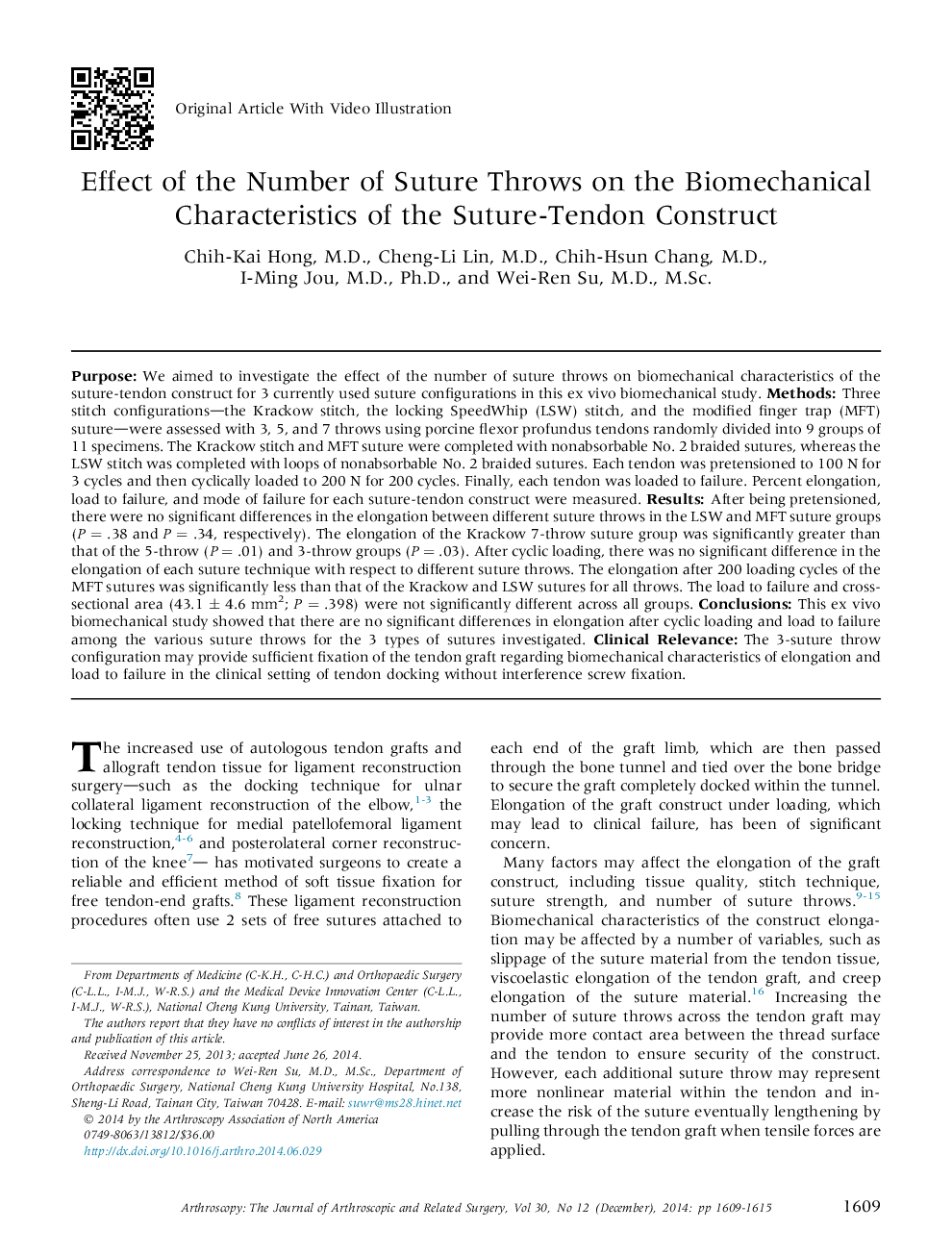| کد مقاله | کد نشریه | سال انتشار | مقاله انگلیسی | نسخه تمام متن |
|---|---|---|---|---|
| 4042398 | 1603489 | 2014 | 7 صفحه PDF | دانلود رایگان |
PurposeWe aimed to investigate the effect of the number of suture throws on biomechanical characteristics of the suture-tendon construct for 3 currently used suture configurations in this ex vivo biomechanical study.MethodsThree stitch configurations—the Krackow stitch, the locking SpeedWhip (LSW) stitch, and the modified finger trap (MFT) suture—were assessed with 3, 5, and 7 throws using porcine flexor profundus tendons randomly divided into 9 groups of 11 specimens. The Krackow stitch and MFT suture were completed with nonabsorbable No. 2 braided sutures, whereas the LSW stitch was completed with loops of nonabsorbable No. 2 braided sutures. Each tendon was pretensioned to 100 N for 3 cycles and then cyclically loaded to 200 N for 200 cycles. Finally, each tendon was loaded to failure. Percent elongation, load to failure, and mode of failure for each suture-tendon construct were measured.ResultsAfter being pretensioned, there were no significant differences in the elongation between different suture throws in the LSW and MFT suture groups (P = .38 and P = .34, respectively). The elongation of the Krackow 7-throw suture group was significantly greater than that of the 5-throw (P = .01) and 3-throw groups (P = .03). After cyclic loading, there was no significant difference in the elongation of each suture technique with respect to different suture throws. The elongation after 200 loading cycles of the MFT sutures was significantly less than that of the Krackow and LSW sutures for all throws. The load to failure and cross-sectional area (43.1 ± 4.6 mm2; P = .398) were not significantly different across all groups.ConclusionsThis ex vivo biomechanical study showed that there are no significant differences in elongation after cyclic loading and load to failure among the various suture throws for the 3 types of sutures investigated.Clinical RelevanceThe 3-suture throw configuration may provide sufficient fixation of the tendon graft regarding biomechanical characteristics of elongation and load to failure in the clinical setting of tendon docking without interference screw fixation.
Journal: Arthroscopy: The Journal of Arthroscopic & Related Surgery - Volume 30, Issue 12, December 2014, Pages 1609–1615
